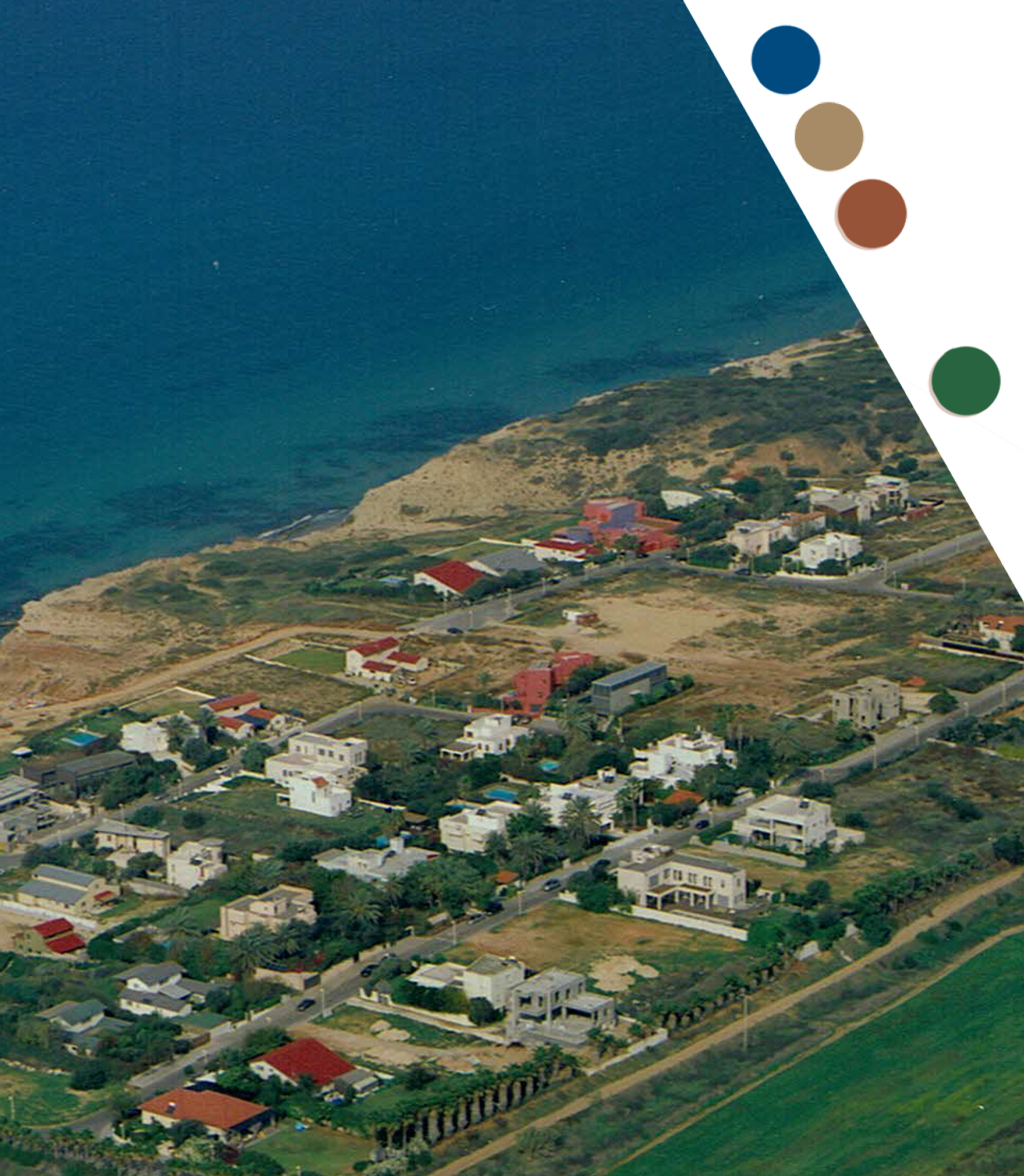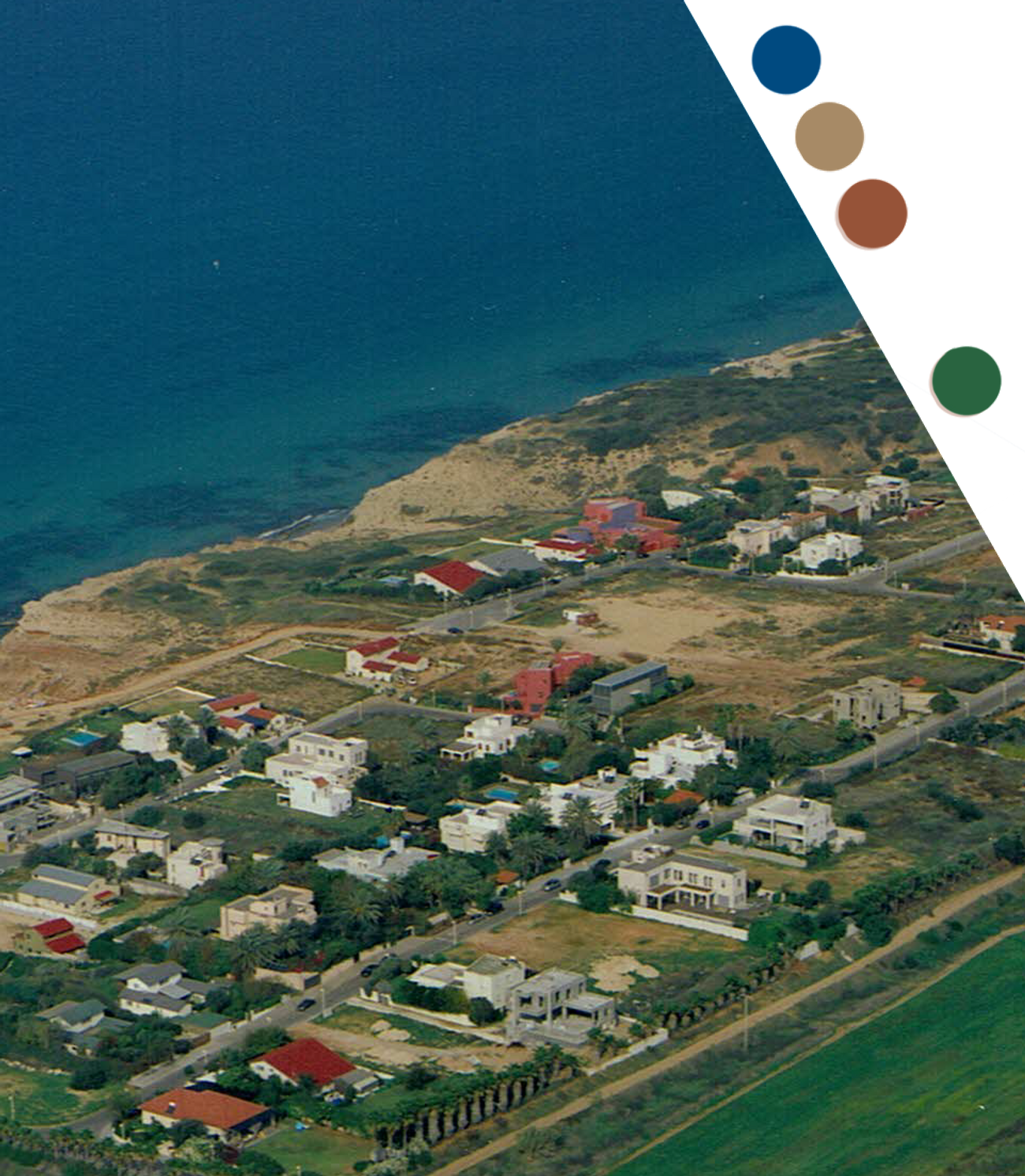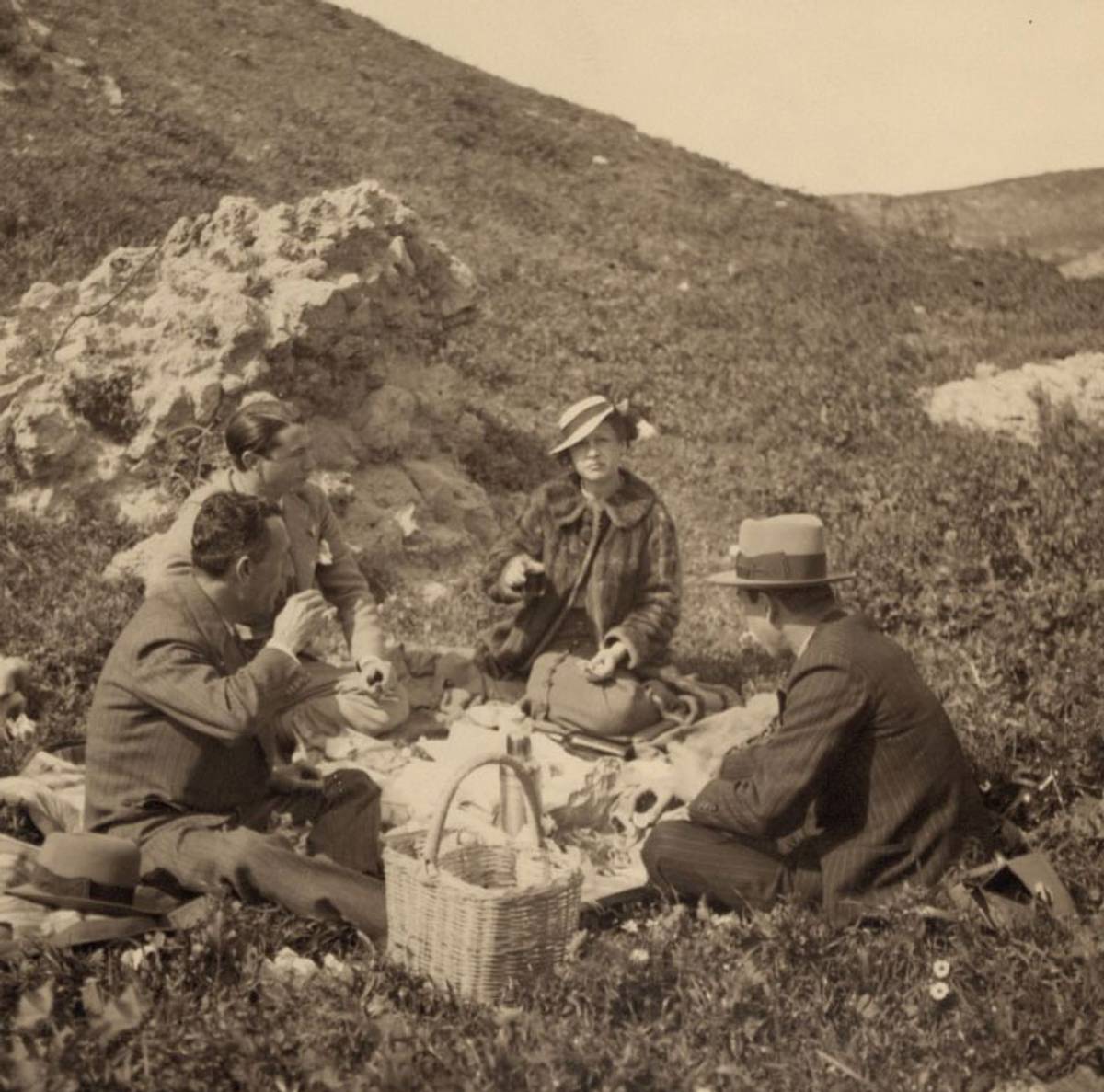Letter From Arsuf
On Israel Independence Day, reflecting on more than 20 years of living on a cliff overlooking the Mediterranean




I moved to Israel in 1971. For 27 years I lived in apartments. In 1991 I purchased a half acre of agricultural land on a bluff overlooking the Mediterranean Sea, 10 miles north of Tel Aviv. This land was located in a place named Arsuf. The authorization that converted the land from agricultural to residential use came through in 1997, and the tax on my empty plot increased from $500 per year to $16,000. If I built a house, however small, I would only have to pay a property tax based on the size of the house. I decided to build a small cottage. My yearly tax then dropped to $3,000. Since then, I have lived in the house I built.
The locale where I live is now a private, gated community and one of the premier residential areas in Israel. It is fairly secluded and is bounded by the sea to the west, and nature parks to the south and north. The eastern portion of the land is owned by an adjoining kibbutz named Shefayim. At present, 45 families live in Arsuf.
Like many towns and places in Israel, Arsuf has a history that goes back more than 2,000 years. In Roman times, Arsuf became the chief commercial and industrial center of the region. In 640 CE the city fell to Moslem conquerors. It remained a Moslem city for over 400 years. In 1101, Christian Crusaders conquered the city, and for a time it became one of their important strategic strongholds.
Ninety years later, during the Third Crusade, King Richard the Lionheart of England fought a fierce battle at Arsuf against the Kurdish Moslem leader Saladin. Richard and his knights defeated Saladin and his army. Richard’s victory resulted in the coastal area of central Palestine, including the port of Jaffa, returning to Christian control.
Richard and Saladin never met face to face. But both men respected each other and maintained contact through messages carried by emissaries. Richard praised Saladin as being the greatest and most powerful leader in the Islamic world, and Saladin in turn stated that there was no more honorable Christian lord than Richard. After they signed a treaty to end the fighting, the two men continued to send each other gifts as tokens of respect. Richard also sent Saladin a message saying, “Within three years, I shall return to capture all the Holy Land.” Saladin replied, “If I have to lose my lands, I would rather lose them to a great warrior like yourself than to any other man” And when Richard became ill, Saladin sent his personal physician to treat him.
In those days, Arsuf encompassed a heavily wooded forest. The forest no longer exists, and Crusader control of the city did not last long as well. By the 14th century, the place was abandoned and deserted. After WWI, the League of Nations granted the British government the mandate, or administrative control, of Palestine. British control lasted till 1948, when the State of Israel was established. Shortly thereafter, Israeli archaeologists began to excavate Arsuf. Their excavations continued into the 1990s.
Under the British mandate, the socialist-oriented Jewish labor movement was the dominant political and settlement force in Palestine and led most of the Jewish communities. This situation put them in charge of the land and they allocated it to their members and to the socialist kibbutzim.
In 1935, immigrants from Poland founded kibbutz Shefayim that bordered Arsuf. At the same time, private individuals from Europe purchased land to the east of Arsuf. In the late 1940s, kibbutz Shefayim desired this land for farming, so they concluded a barter with the private owners of the land. They traded kibbutz land on the bluff overlooking the sea, for farmland east of the seacoast. After all, they thought, of what use is land so near to the sea for farming. The owners of the farmland, however, astutely felt that in the future, land on the seacoast would be far more valuable than agricultural land.

Among the purchasers of land on the seacoast were members of the Gerrer Hasidic sect. This sect already was a prominent group in Palestine on the eve of WWI, with most of their members living in the four “Holy Cities” of Jerusalem, Hebron, Safed, and Tiberius. By the end of the British mandate in 1948, the Gerrer Hasidim were the most dominant Hasidic group in Israel. Members of the group, who were adept at business and real estate, held onto their land for future trades and investments. They were not interested in farming the land, nor were they desirous of living near a socialist kibbutz.
As a result, by the 1950s, the Gerrer Hasidim began to sell their seacoast land to wealthy private individuals. The buyers were well connected to the government and local politicians, and they later succeeded in selling the land for future house construction. Kibbutz Shefayim also began selling their seacoast land to private individuals. Although the land was officially farm land, many of the buyers heard well-founded rumors that the government would eventually authorize the land for housing.
In 1991, my wife, who is an Israeli VIP, having established the first-ever professional Israeli modeling agency, was at a celebrity’s wedding in Arsuf. As she walked around, she was fascinated by the place and its vistas of the sea. At the wedding, she encountered someone she knew from her modeling acquaintances, who had recently become religious, and now represented Gerrer Hassidim who wanted to sell their land in Arsuf. He told her that a Gerrer Hasid in England wanted to sell his plot in Arsuf to pay for his daughter’s upcoming wedding.
The evening when my wife came home, she was all excited and told me that land in Arsuf was available for purchase and we should buy a plot. My wife is far more adventurous then I am, and she has a good sense for Israeli real estate. Not being a businessman and not knowing much about real estate in Israel, I remained cautious. I called my parents in the United States and asked their advice. My father, who had visited me many times, was for years involved in real estate. He told me that land on the sea was very valuable, because people love living near water. Since privately owned land in Israel was finite, he advised me to go ahead and buy the land, even though it was agricultural at the time. He said if ever an OK to build came through, the land would be worth much more than I paid for it. After I heard this, I took out a bank loan and bought the land.
Six years later, the government authorized the land in Arsuf for the building of homes. When this happened, my taxes on the property skyrocketed. I had to either build on it, or sell it. If I sold the land, 50% of my profit would go to the State of Israel. But if I built a small house on it, I would only pay house taxes every two months. And since this was my only home in Israel, if I later sold it, I would not have to pay the State of Israel for any profit I made from the sale. With my wife’s encouragement, I decided to build a home on the land.
I contacted a reputable construction company that built wooden houses. I contracted with them to build a wood house with a gable slate roof and to cover the outside walls with Jerusalem stone. I felt that being near the sea, the stone would absorb the water and salt and not deteriorate like stucco siding would. The gable roof allowed rain water to descend and not collect at the top. In December 1998, construction of the house began. The company building the house employed workers from Thailand. They lived in a mobile home on my property and worked on the house every day. In April 1999, in time for Pesach, my house was finished.
The house is one floor without a basement. It sits on half my plot. Since water in Israel is very expensive, I covered the remaining ground with plastic grass. Although a bit prickly, it is always green. Since it gets hot in the summer, snakes and other four-legged creatures avoid it. I also have an orange tree, a lemon tree, a pomegranate tree, and an olive tree. From the time my home was built, it became the place for my daughter’s engagement party, and for family bar and bat mitzvahs, high school graduations, army completions, and other celebrations.
As I look back, I recall how nervous I was about buying the land and later building a house on it. Conservative soul that I am, I was terrified of using all my savings and the money my parents put aside for my children, to invest in what I saw as being a very risky real estate venture.
How wrong I was. The half-acre I purchased in 1991 is today worth 20 times what I originally paid for it. But rather than sell it, I built a small cottage on part of the land and live in it. We use the rest of my plot for family events and celebrations. People who visit my home always comment on how comfortable they feel and that the house has good energy. I have no idea what they feel, but I am happy they feel so. What I do know is that so many times when company visits, they feel so comfortable and at home that they remain until 2 or 3 o’clock in the morning. I usually say my goodnights at around 11 o’clock, and let my wife continue to feed the visitors.
In the years since I built my house, Arsuf has become a home and refuge to some of Israel’s wealthiest families who want privacy and quietness, and have the funds to purchase a plot and build on it. It is a gated community with a 24-hour guard at the entrance. Arsuf is now home to fashion models, movie and TV personalities, and wealthy professionals, high-tech entrepreneurs, and business people. Although I don’t socialize with them, I do say “Good morning” when I see them.
My living in Arsuf has led people to believe that I am a millionaire. After all, how could an academic afford to live in such an exclusive place? Once I was embarrassed to tell people where I lived. I felt I had to explain that I was not one of the wealthy residents, but I have given up doing so because no one believed me anyway.
Today I am less reticent about saying where I live. I have to admit that Arsuf is one of the most quiet and calm places in the country in which to live. And given all of the tensions we face in Israel, I feel fortunate that I live there. I intend to continue doing so. So here I am, a retired Israeli academic living in the smallest house in Arsuf among the country’s who’s who.
Every day when I come home, I usually take a short, half-minute walk to the edge of the cliff. The sky is usually cloudless and blue. I generally carry a cup of tea with me. There are no large rocks or rough ground and weeds to climb over so the tea never spills. A short smooth road runs next to my house and ends at the cliff’s edge. Arsuf contains a number of short roads that run parallel to all the homes. I sit on the ground or on one of the small outcroppings facing the sea while I sip my tea. I look at the Mediterranean below me and at the homes that have been built and are being built since I moved to Arsuf more than 20 years ago. The only sound I hear is the wind. No cars, buses, or honking disrupt the silence. I think how calm and peaceful everything seems. And I think how nice it would be if this country could finally achieve the peace that I feel as I sit looking out at the sea.
Robert Rockaway is professor emeritus at Tel Aviv University, and the author of But He Was Good to His Mother: The Lives and Crimes of Jewish Gangsters.